My first stop was the Atlantic Center for the Arts where I was provided lodging, meals, and a studio for 3 weeks. This was a perfect opportunity to continue my Archive in the South which has a large population of people living in mobile | manufactured housing.
I decided to create a logo to help legitimize my practice of what I was now calling an “Archive”. This term I felt was a term that most people could relate to and understand when speaking to MH park owners, managers, and residents. The logo was designed by a friend who to my surprise was living in New Smyrna Beach and MH ARCHIVE was born! I had shirt patches printed and a car magnet for my truck. I created my own “business” without the intention of selling anything or making any money. I wore a navy-blue button up shirt with a logo patch over the left pocket. I also carried business cards to hand out and trade with people I met.
I began calling around to the dozens of MH communities all within a 20 mile radius of ACA. My approach was to gain permission first to enter into their neighborhood and to document it as part of my archive. I set up meetings with MH owners and managers who would then let me walk around or sometimes give me a tour. I would meet residents by walking through the streets. While in FL I documented 14 MH neighborhoods. After visiting each park I recorded my experiences along with a map/ location/ date in a journal to help keep track of places I had been. I’ll be using this journal to revisit my travels this summer.
I’ll be honest when I arrived, I was overwhelmed by the number of communities that I found and kept finding as I drove around in just a small 10-mile radius. To archive all the mobile | manufactured home communities it would probably take years. So I focused on a few small towns around ACA: New Smyrna Beach, Port Orange, Ormond Beach, Daytona, Edgewater and later Melbourne & Crystal River.
Video of Riverside MHP located in Port Orange, FL — Danny, the park manager, took me on a golf cart ride around the neighborhood stopping along the way to chat with residents. We also stopped along the water to walk out on to one of the many docks people fish off of in the community.
A trend I began to pick up on through speaking to residents and professionals while visiting MH parks was the fact that many of these communities along the intracoastal waterway were descendants of old fish camps like Riverside shown above. These neighborhoods had primo water views with a cool sea breeze surrounded by pelicans, dolphins, and manatees. I would say the majority of the parks I found and visited were 55+ communities. I found these parks to be particularly well maintained with amenities like a pool and clubhouse and a board of activities. I had a pretty good success rate for gaining permission to walk around the communities either through setting up appointments over the phone or walking directly into the office to ask. I prefer to ask permission when possible because as an insider who grew up in mobile home park where my parents still reside, I also feel like an outsider as someone who does not inhabit this space anymore. I know how I would feel if I saw a stranger taking photos of my home so I always keep that in the back of my mind.
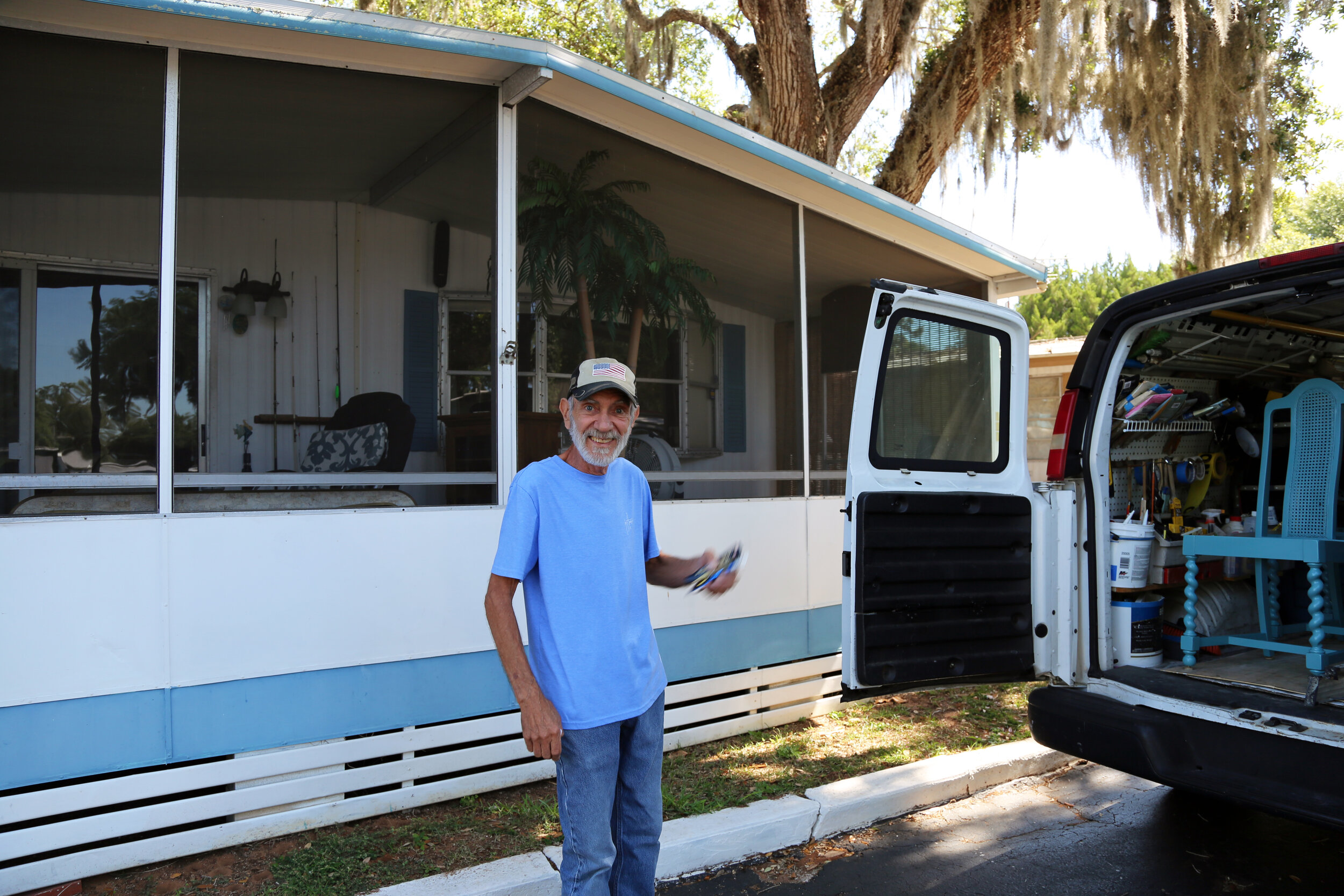
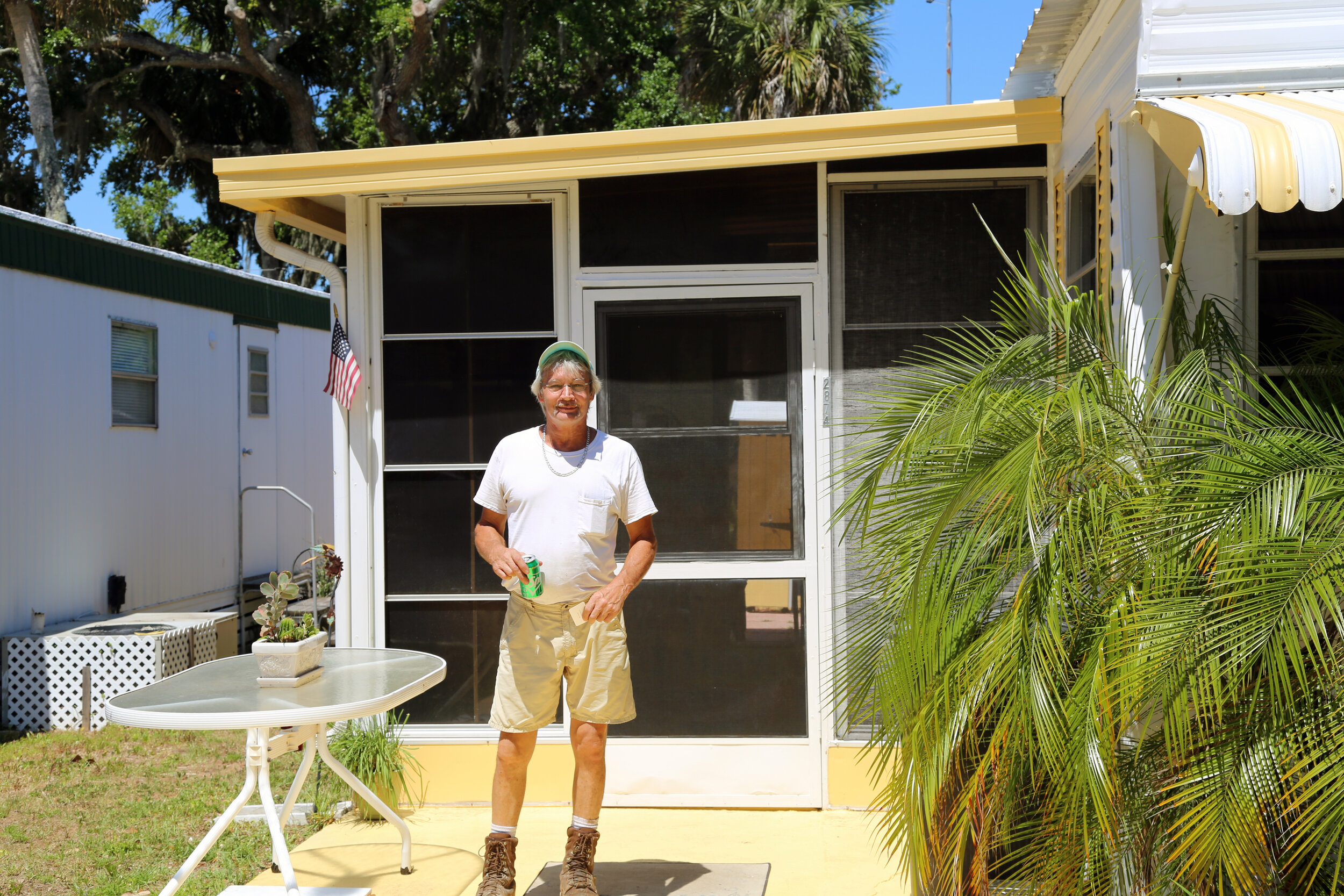

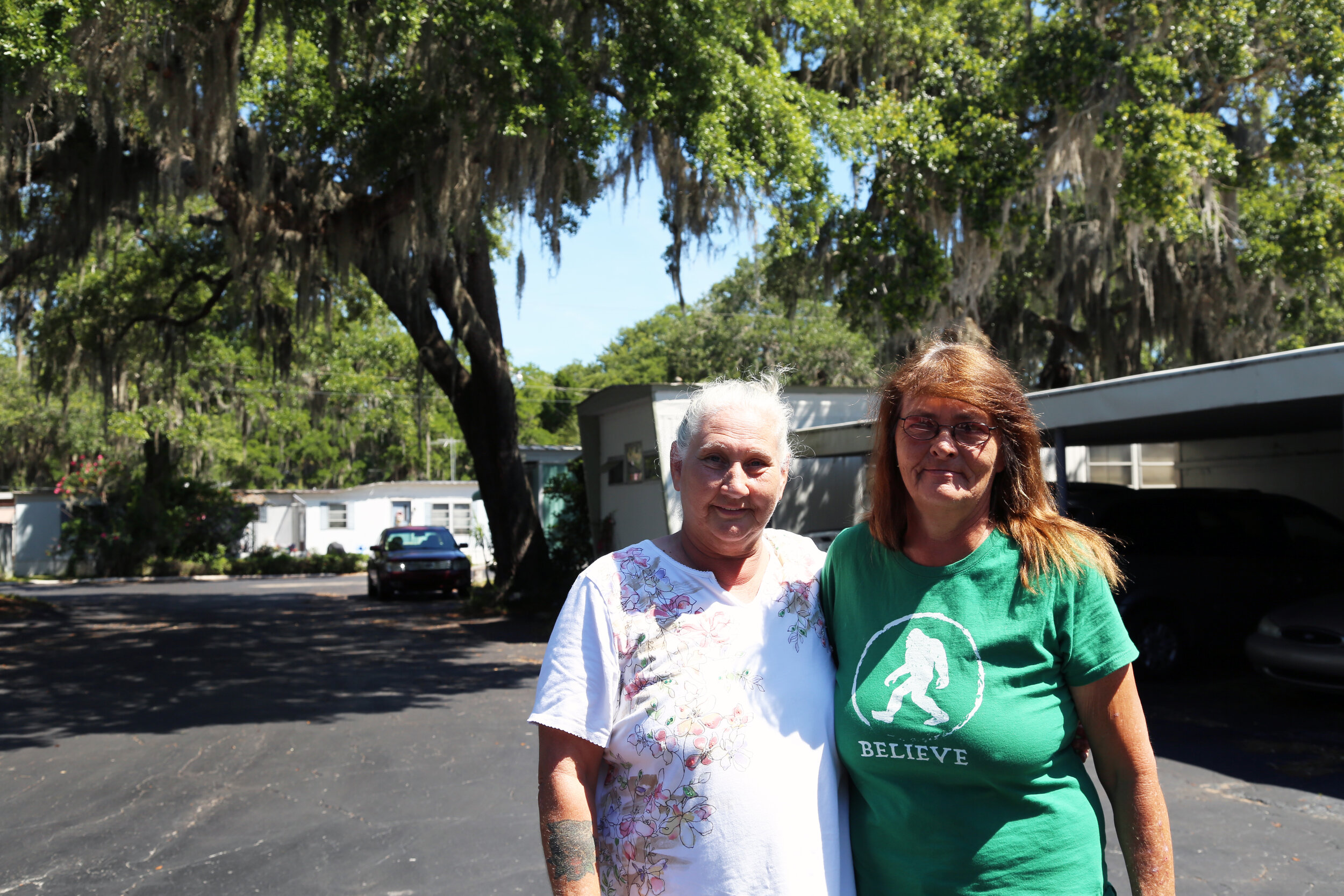

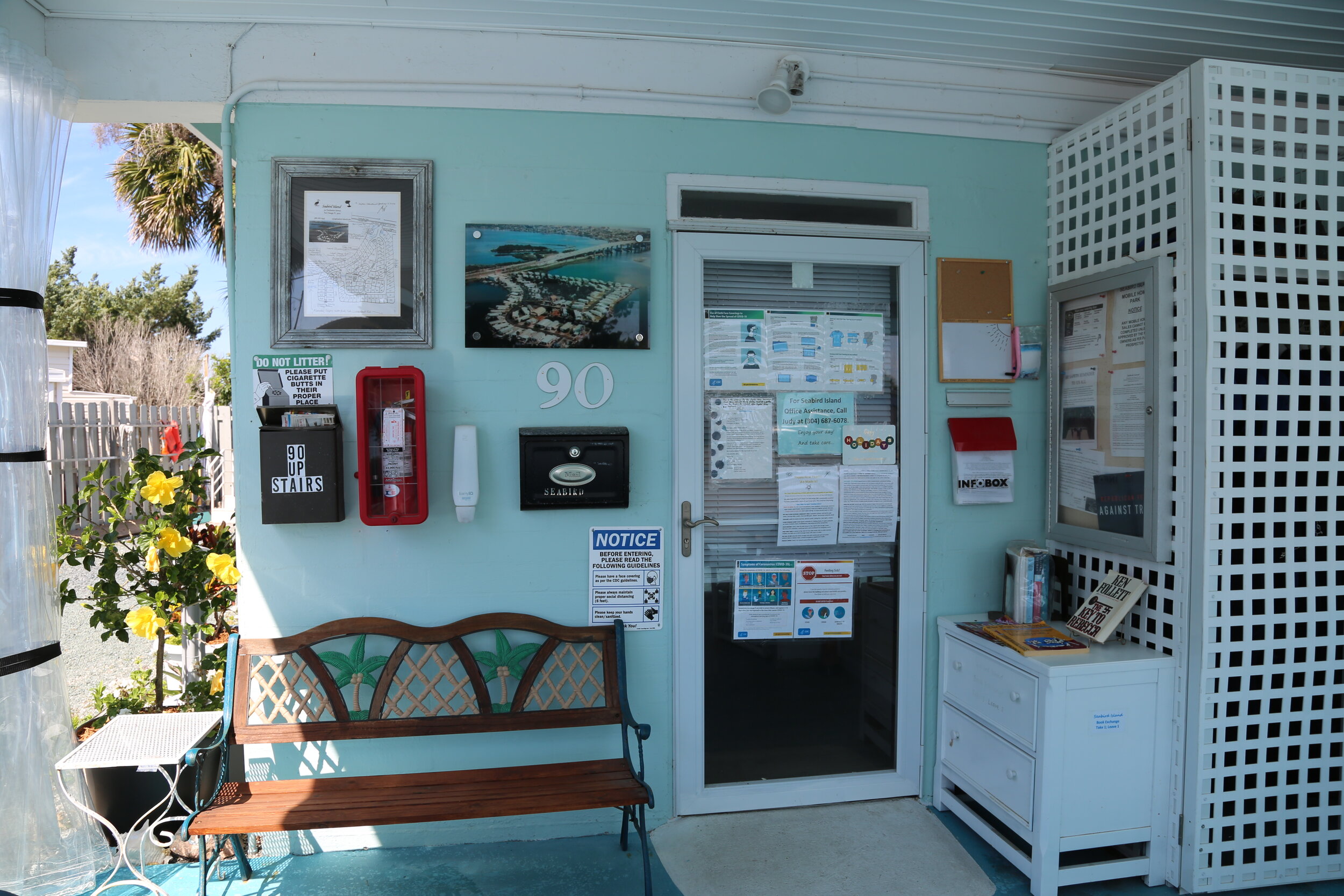



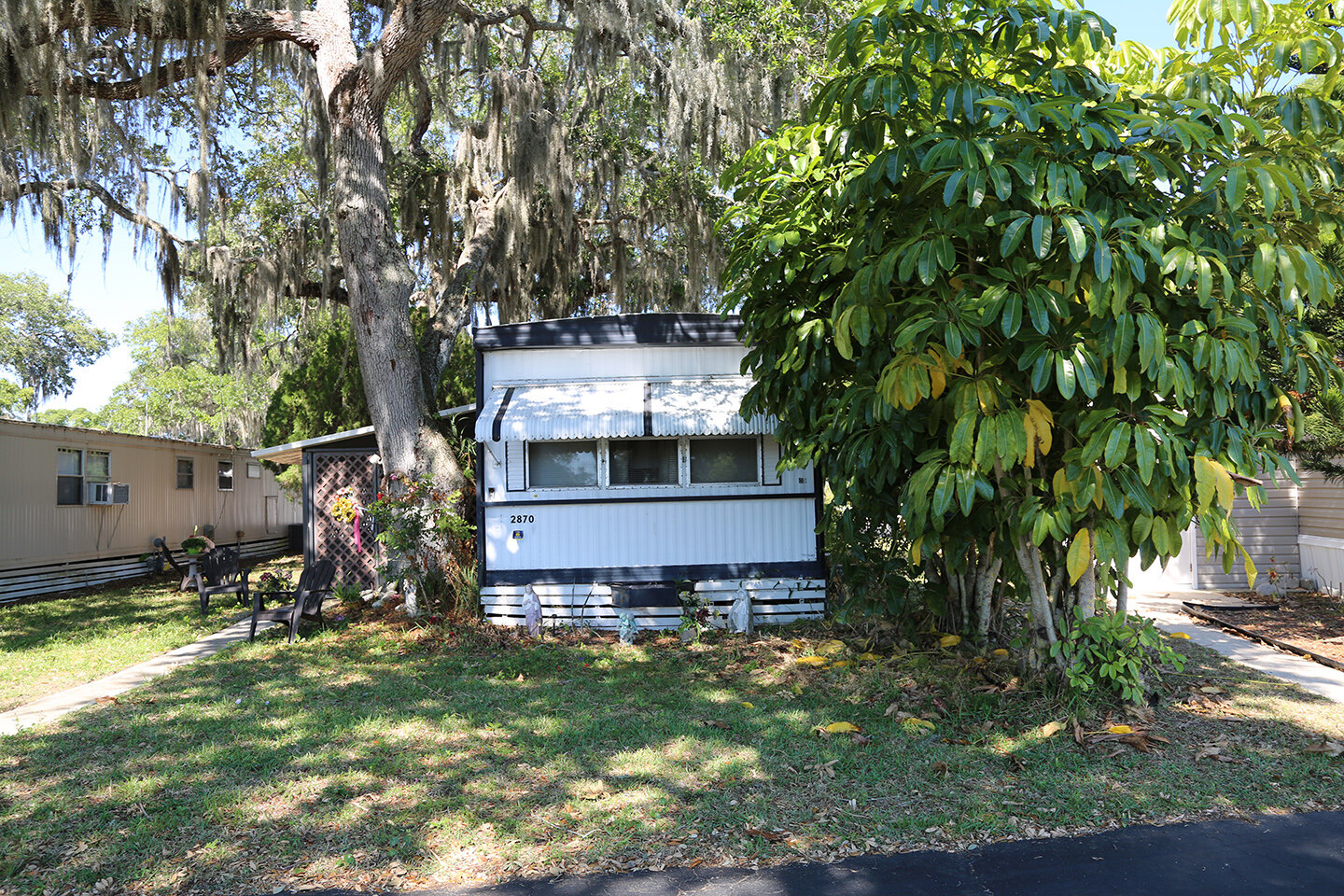
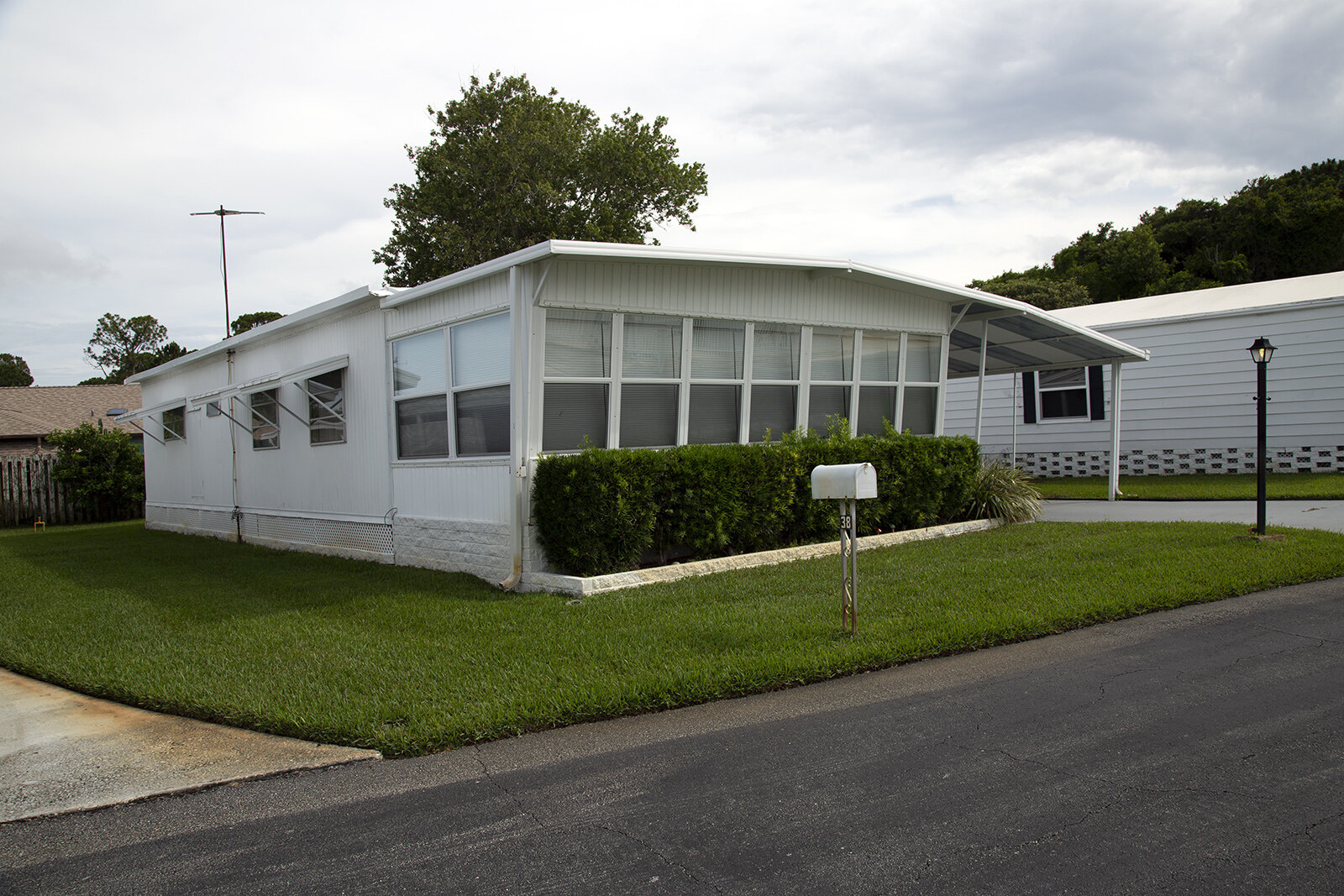
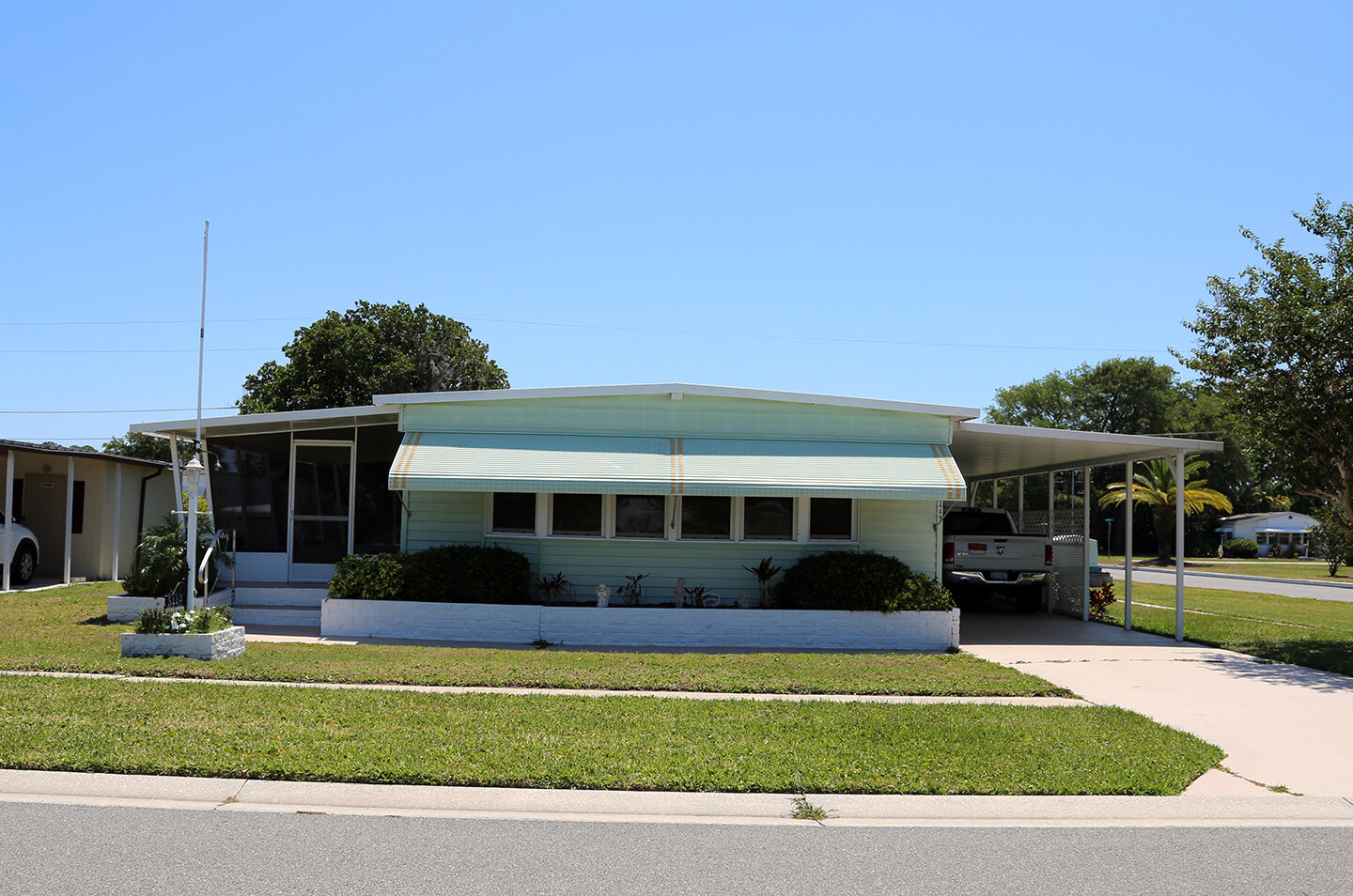
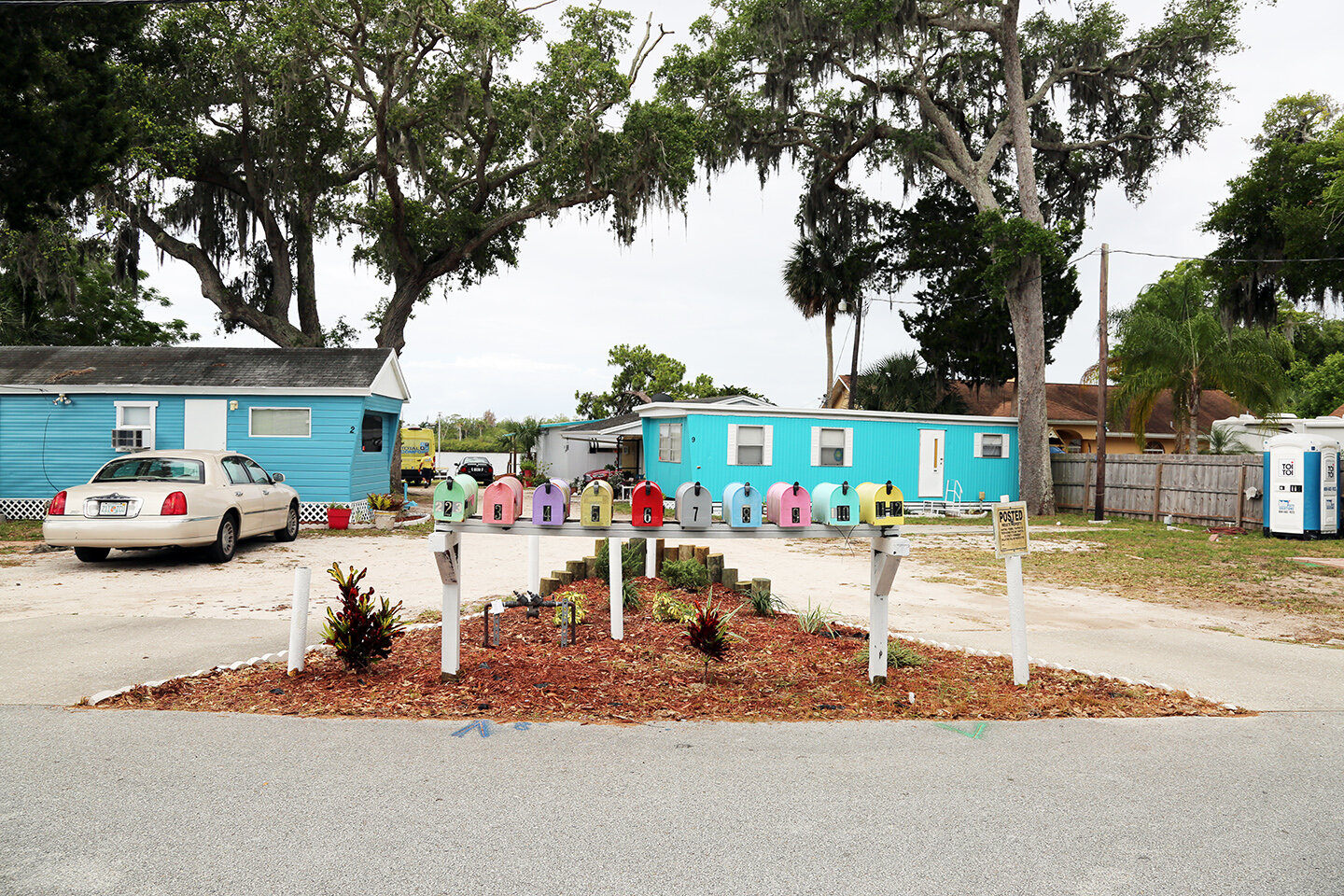
I met a lot of residents in FL mostly of the 55+ crowd that were so friendly and inviting. Above are a few pictures of my Florida travels with descriptions below.
1st image is Walt who is a carpenter tradesman. He refinished the chairs you see in the back of his van. He built a dock down from his home where he enjoys fishing in his free time.
The second image is Ray. Ray gut renovated his vintage home and invited me into his screened in porch where he shared part of his history and struggle with his health.
Third image is Bob who was perfectly color coordinated with his home. I took his portrait and sent it to him.
Fourth image is of Debbie and Diane who are the sweetest and filled me in on all the park gossip and their concerns about the neighborhood.
Fifth image is a special MHP located on an island called Seabird Island. This is the only MHP that encompasses the entire island and has survived all the hurricanes FL has had over the years. It sits in the intracoastal waterway which helps protect the homes. Most of the homes have a dock to fish right out the back of their homes with communal fishing spots for those who are not right on the ocean.
Sixth image is Seabird’s park office with an old arial photo of the island.
The rest of the images are a few homes from different Florida neighborhoods I visited.
I learned from talking to residents/ managers/ and owners that old homes even if they were built in the 80’s the parks don’t want to keep them around. The owners want brand new homes to attract new buyers. This however has repercussions because this changes the affordability of a used home and also leaves residents unable to sell their older homes. Even if the resident wanted to move their home they would have difficulty finding another community to rent a lot from and this is also dependent on whether the home is safe to move. Older homes can be badly damaged in a move and are often deemed unsafe to do so.
This is Pyramid Park which took me by surprise as I was speeding by down US 1 that I had to turn around and check it out. Every home in this park was painted white! The yards were perfectly curated and maintained with that mid-century feel. There were two long stretches of road on either side with a pool smack dab in the middle. The park sits on the intracoastal waterway.
Even though I didn’t meet anyone in this community I think this goes down as one of my favorites. I was in Florida for over a month so this post could go on and on but I’ll stop here with this beauty.
Some thoughts and feelings
Traveling to new communities each day I found to be both rewarding and such a great opportunity to learn about affordable housing through the lens of other MH parks outside of my own experience of growing up in one. I did have a moment after the first week when I was going to communities each day in the 90 degree heat and meeting new people and not knowing how they would receive me became emotionally and physically draining. Pushing through my anxieties of entering unfamiliar places with or without permission and gaining the trust of residents was a lot to take in so quickly. So I forced myself to slow down and give myself space so that I could continue this project in the right state of mind. You will hear more about how my visit to TN & GA became even more emotional and taught me how important it is to advocate for low income families in my next post.







